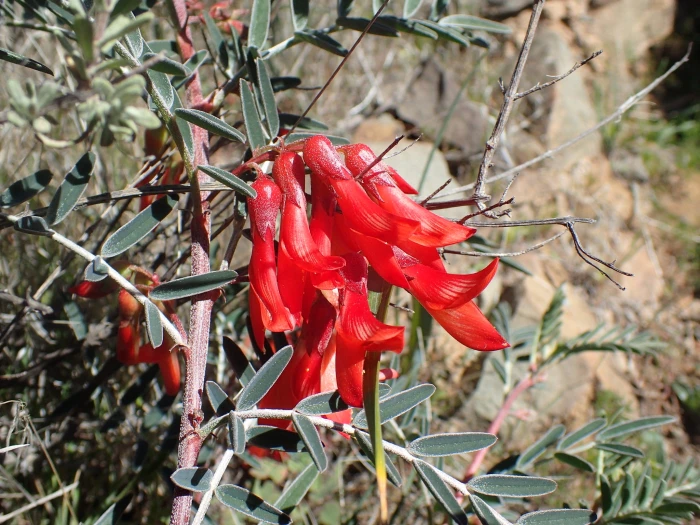Cancer Bush
(Lessertia frutescens)
Cancer Bush (Lessertia frutescens)
/
/

Mahomed Desai
CC BY 4.0
Image By:
Mahomed Desai
Recorded By:
Copyright:
CC BY 4.0
Copyright Notice:
Photo by: Mahomed Desai | License Type: CC BY 4.0 | License URL: http://creativecommons.org/licenses/by/4.0/ | Rights Holder: Mahomed Desai | Publisher: iNaturalist | Date Created: 2020-08-19T11:07:16-07:00 |

























Estimated Native Range
Climate Requirements for Brea, California
| This Plant | Your Site | Plant Suitability for Your Location | ||
|---|---|---|---|---|
| • Precipitation | 12" - 14" | 16" | Your precipitation may be too high for this plant. | Too high |
| • High Temp. | 75°F - 89°F | 88°F | Your summer temperatures are normal for this plant. | Excellent |
| • Low Temp. | 34°F - 48°F | 44°F | Your winter temperatures are normal for this plant | Excellent |
This plant may not grow well at your location - your precipitation is too high.
Summary
Lessertia frutescens, commonly known as Cancer Bush or Sutherlandia, is a small, semi-deciduous shrub native to the dry parts of southern Africa, particularly in open woodlands and grasslands. It typically grows up to about 39 inches (1 meter) high and spreads to a similar width. The plant features pinnate leaves and bears striking red-orange pea-like flowers from spring to mid-summer, which are quite showy and attract pollinators. After flowering, it produces bladder-like inflated pods that add further interest to its appearance.
Cancer Bush is valued for its hardiness, drought tolerance, and rapid growth rate, making it a suitable choice for xeriscaping and arid garden settings. It thrives in full sun and well-drained soil, requiring minimal maintenance once established. In cultivation, it is used for its ornamental qualities and as a medicinal plant, believed to boost the immune system and treat various ailments, including cancer. However, scientific evidence supporting these claims is limited. Gardeners should be aware that it self-seeds readily, which can lead to unwanted spread in some areas.CC BY-SA 4.0
Cancer Bush is valued for its hardiness, drought tolerance, and rapid growth rate, making it a suitable choice for xeriscaping and arid garden settings. It thrives in full sun and well-drained soil, requiring minimal maintenance once established. In cultivation, it is used for its ornamental qualities and as a medicinal plant, believed to boost the immune system and treat various ailments, including cancer. However, scientific evidence supporting these claims is limited. Gardeners should be aware that it self-seeds readily, which can lead to unwanted spread in some areas.CC BY-SA 4.0
Plant Description
- Plant Type: Shrub
- Height: 3-6 feet
- Width: 3-5 feet
- Growth Rate: Moderate
- Flower Color: Red, Orange
- Flowering Season: Spring, Summer
- Leaf Retention: Evergreen
Growth Requirements
- Sun: Full Sun, Part Shade
- Water: Low
- Drainage: Medium, Fast
Common Uses
Bird Garden, Butterfly Garden, Drought Tolerant, Low Maintenance, Showy Flowers
Natural Habitat
Native to the open woodlands and grasslands of southern Africa
Other Names
Common Names: Cancer Bush, Sutherlandia, Duckplant
Scientific Names: Lessertia frutescens, Colutea frutescens, Colutea grandiflora, Colutia frutescens, Colutia frutescens, Sutherlandia frutescens, Sutherlandia frutescens
GBIF Accepted Name: Lessertia frutescens